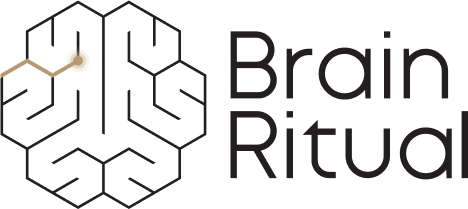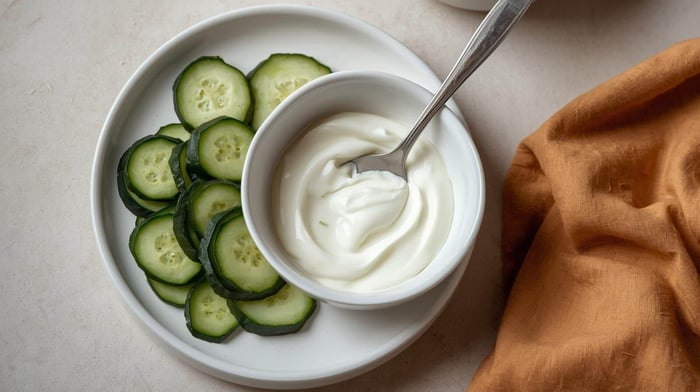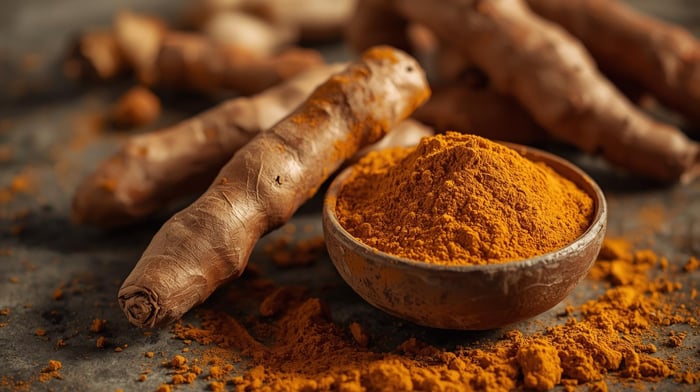Table of Contents
At a Glance
|
When a migraine hits, even thinking about food feels difficult. Your stomach flips, light is too bright, and it can seem safest not to eat at all. The good news is that a few gentle foods and small, steady sips of water or electrolytes can make a real difference to how you feel.
This guide focuses on what to eat when you have a migraine, starting with hydration and simple, fresh options that go down easily, even when you’re feeling off.
You’ll find ideas for managing nausea, a simple recovery plate for later when things ease, and short notes on why each choice helps.
If a small coffee sits well early on, we’ll explain when caffeine may help and when it’s better to skip it.
There are no complicated recipes or long grocery lists here. You’ll get calm, practical options you can use right now, a brief science section to help you understand what’s happening, and a plan to help you feel more in control next time a migraine hits.
Quick Picks You Can Eat Right Now
It’s best to use how you’re feeling as your guide. Here are some tips if you’re wondering what to eat when you have a migraine and are nauseous:
If nausea is strong
Clear bone broth: gentle sodium and fluids without heaviness.
Coconut water: natural electrolytes with a mild sweetness that many tolerate.
DIY electrolyte water (water + pinch of salt + squeeze of lemon if tolerated): a simple way to replace fluids and minerals.
Ginger or peppermint tea: soothing herbs many find calming for the stomach.
Cucumber slices: high water content with a fresh taste and very little odor.
Plain yogurt, if tolerated: soft protein and a cool texture; choose unsweetened and fresh.
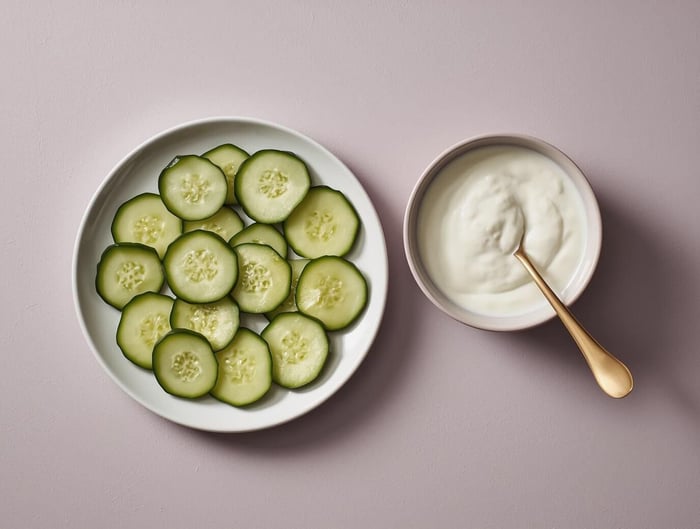
If you can handle something soft
Scrambled eggs with a little olive oil: light on the stomach with protein to keep you satisfied.
Plain jasmine rice or rice cakes: simple, low-odor carbs that won’t overwhelm your stomach.
Mashed avocado with a pinch of salt: gentle fats and potassium for steadier energy.
Plain roasted chicken: lean, mild protein; serve freshly cooked to keep odors and histamine low.
Steamed zucchini: gentle, low-fiber vegetable with a mild flavor.
If you want something slightly sweet and simple
Blueberries or pears: light sweetness with some fiber and low fragrance.
Unsweetened applesauce: spoonable, mild, and easy to eat when chewing feels difficult.
Sweet potato for low GI easily tolerated carbs
Early-attack caffeine (optional)
- A small coffee or black tea, only if it sits well: caffeine may help some people when taken early in the attack (ideally within the first hour) in a small amount, and it may boost the effect of common pain relievers. Avoid caffeine late in the day since it can affect sleep, and skip it if you know it worsens your nausea, anxiety, or headache.
Why these work
Hydration with a small amount of electrolytes helps your body keep the fluid it needs, supporting plasma volume so circulation and blood pressure stay steadier. That can ease lightheadedness and help you feel more settled during an attack.
Fresh, low-odor, low-histamine choices are less likely to provoke nausea or sensory overload. Freshly cooked foods and same-day servings tend to have lower histamine than aged, fermented, or long-stored leftovers, and mild flavors help keep smells down.
Simple proteins and gentle fats feel easier than heavy, greasy meals because they are less likely to sit in the stomach and worsen queasiness. Think eggs, plain chicken, avocado, and a little olive oil rather than fried or very rich dishes.
Small portions help because a stretched, overly full stomach can intensify nausea. Take small bites, pause between them, and stop at the first sign that symptoms are rising.
When you’re unsure what to eat during a migraine, pick fresh, mild foods in simple combinations. Leftovers are fine for many people, but if histamine is a trigger for you, aim to eat foods cooked the same day or cool and freeze portions quickly, then reheat as required.
Hydration Game Plan
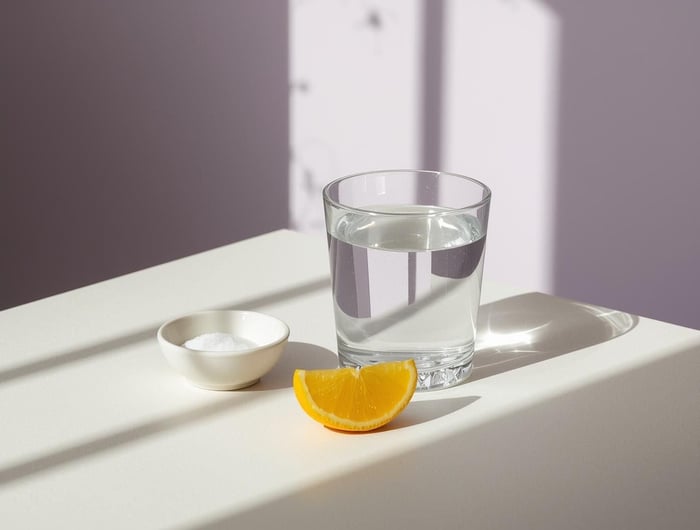
Start with small, steady sips, as big gulps can upset your stomach. Take a few sips every 5–10 minutes and pause if nausea rises. Cool or warm fluids are fine; choose what feels best.
What to sip
Water with a pinch of salt
Coconut water
Sugar-free or low-sugar electrolyte tablet or powder
Clear bone broth
Ginger or peppermint tea, warm or cooled
Electrolyte mix
To make a simple DIY electrolyte drink, stir a small pinch of salt into 8–12 oz of water and add a small squeeze of lemon if you can tolerate it. Salt options include regular iodized table salt or a pinch of Himalayan pink salt or Celtic Sea salt. If you’re looking at Celtic salt for migraines, it works here simply as a sodium source. Choose a fine grind so it dissolves quickly. At this amount, these specialty salts provide only trace minerals and are usually not iodized. If you prefer a product, choose a sugar-free or low-sugar electrolyte mix, which often includes potassium or magnesium.
Ketone body salts
An energy deficiency or increased oxidative stress has been linked to most migraine triggers and plays a strong role in migraine. Ketone bodies such as D-β-hydroxybutyrate (BHB) provide an alternative fuel for the brain and are being studied for potential anti-inflammatory and analgesic effects. While individual experiences vary, some of our customers report that Brain Ritual®, which combines ketone bodies with electrolytes (magnesium, potassium, sodium), antioxidants, and other supportive nutrients, feels helpful when taken at the very start of an attack. Start with a small serving at the onset of an attack, sip with water, and use at this stage only if it sits well and there are no objections from your doctor.
How much to take at a time
Take small, regular sips until your mouth feels less dry and you start to feel a bit steadier. Don’t force it; drink at the pace that feels comfortable for you.
If you are vomiting
Ideally, sip about a teaspoon of fluid every few minutes. Ice chips or fluid served cold or at room temperature are often easier to keep down. Increase the amount slowly once it stays down. Seek medical care if you can’t keep fluids down for 24 hours or have signs of dehydration.
Why this helps
During a migraine, reduced intake of fluids and salt, plus vomiting or sweating, can lower plasma volume. A small amount of electrolytes, especially sodium and potassium, helps water absorption in the small intestine and supports extracellular fluid and blood volume. More stable volume helps keep circulation steadier and may ease lightheadedness. Taking small, regular sips is also kinder to a queasy stomach.
What Foods to Avoid During a Migraine
It’s best to keep things simple while symptoms are active, so avoid or limit the following:
Alcohol, especially red wine: can worsen dehydration and contains histamine, tyramine, and sulfites.
Aged or fermented foods (e.g., aged cheeses, cured meats, soy sauce, kombucha): are higher in histamine and other amines.
Very spicy, greasy, or ultra-sweet foods: are more likely to aggravate nausea or reflux and can cause energy swings.
Leftovers older than 24 hours (if histamine is a trigger): stick to food cooked the same day, or freeze portions promptly for later.
Large meals: a stretched stomach can intensify nausea; choose small portions and pause between bites.
Too much coffee or strong tea: caffeine taken late or in large amounts can cause jitters or disrupt sleep; keep it to a small serving early in the day and skip it if symptoms worsen.
Foods with strong odors (e.g., fried onions, garlic, fish): smell sensitivity is common during attacks, so opt for mild-smelling foods.
Artificial sweeteners (if you notice they trigger you): avoid them during attacks.
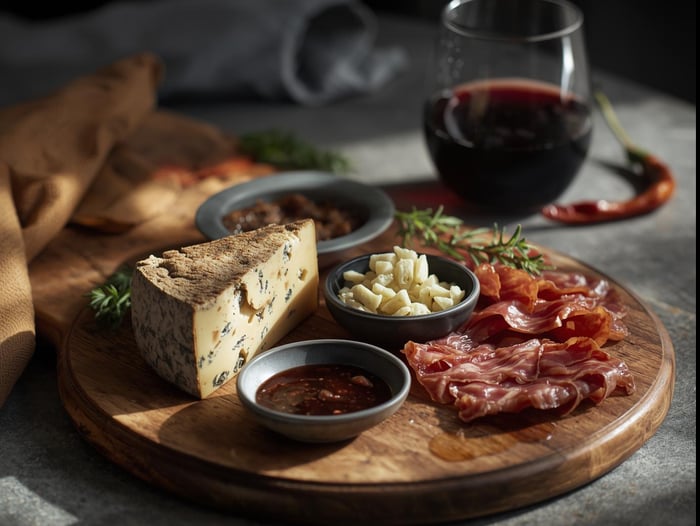
If you’re unsure, stick with fresh, mild foods in simple combinations until things settle. Ease back toward your usual choices as your stomach feels more comfortable. Food triggers vary and the evidence is mixed, so personalize your choices based on your notes rather than blanket restrictions. Check out our full List of Foods to Avoid when you have a Migraine.
A Simple Recovery Plate for Later
When the worst passes and your appetite starts to return, keep things gentle. Start with fluids, then build a small plate: protein first, add one or two mild vegetables, and include a small portion of carbohydrate only if you want it. Keep flavors simple and salt lightly. Stop at the first sign your stomach feels unsettled.
How to build it
Choose one protein: roast chicken, scrambled or poached eggs, cottage cheese, or plain turkey breast. (If you tolerate dairy, plain Greek yogurt works too.)
Add one to two soft vegetables: steamed zucchini, peeled cucumber, carrots cooked until tender, steamed green beans, or soft-cooked yellow summer squash. If you prefer something slightly sweet, a few spoonfuls of mashed pumpkin or butternut squash can work well.
Optional carb: a small serving of jasmine rice or rice noodles, or a small portion of potato or sweet potato.
Finish with a little olive oil or avocado for gentle fats.
No fuss ideas
Roast chicken with steamed zucchini; add a few spoonfuls of jasmine rice if desired.
Scrambled eggs cooked in a little olive oil with sliced avocado and cucumber.
Clear broth with shredded chicken, soft carrots, and a small amount of rice.
Cottage cheese with blueberries, plus a few peeled cucumber slices on the side.
Keep portions small, chew slowly, and pause between bites. If you feel up to it later, repeat a small plate rather than pushing for one large meal. If histamine is a trigger for you, choose freshly cooked food or use frozen portions.
The Science Behind What to Eat When You Have a Migraine
Hydration and blood volume
During a migraine, reduced intake of fluids and salt, together with vomiting or sweating, can lower plasma volume (the liquid part of blood). A lower plasma volume destabilizes blood pressure and can contribute to lightheadedness, especially on standing. Small amounts of electrolytes, particularly sodium and potassium, promote water absorption in the small intestine and help maintain extracellular and intravascular fluid volumes. Oral rehydration with electrolyte-containing fluids supports more stable blood pressure and may reduce lightheadedness and fatigue.
Slower gastric emptying and nausea
During a migraine, gastric emptying (how quickly the stomach passes its contents to the small intestine) can slow (Aurora et al.). Larger, high-fat, or very spicy meals increase gastric distension (stomach stretch) and can aggravate nausea.
Smaller portions empty from the stomach more easily and move into the small intestine more quickly (faster gastric emptying). Mild flavors reduce sensory load when you already feel sensitive. Ginger or peppermint can be soothing for some people, and ginger may also support gastric motility (the stomach’s coordinated movement).
Caffeine and adenosine receptors
Caffeine is an adenosine receptor antagonist (it blocks receptors on cells that adenosine uses to promote drowsiness and widen blood vessels; Derry et al.). In some people, a small dose early can enhance the effect of common pain relievers. Later in the day, larger amounts of caffeine are more likely to disrupt sleep or increase jitteriness, so timing and dose matter. Individual responses vary; if caffeine makes your symptoms worse, avoid it.
Histamine and freshness
Biogenic amines such as histamine (naturally occurring compounds in foods) accumulate in aged or fermented foods and in leftovers. Some people appear more sensitive to histamine-related migraine, possibly due to lower diamine oxidase (DAO) activity (an enzyme that helps break down histamine). Freshly cooked meals or portions frozen promptly after cooking can help limit biogenic amine exposure. Reheating does not meaningfully reduce histamine levels.
Energy steadiness and food choices
Very sugary foods can increase glycemic variability (rapid ups and downs in blood glucose), while very greasy meals can sit heavily in the stomach. Simple proteins such as eggs, plain chicken, and cottage cheese, paired with gentle fats like extra-virgin olive oil or a small amount of ghee (if you tolerate dairy), often feel easier on your stomach and provide steadier energy.
Strong food odors can activate migraine-sensitive pathways (trigeminal and olfactory inputs), thus keeping meals mild may also reduce nausea.
Planning Tips for Next Time
Keep a small tray of migraine supplies within easy reach. Stock shelf-stable coconut water or low-sugar electrolyte packets; ginger or peppermint tea bags; a small jar of fine salt; rice cakes or plain crackers; clear broth; and unsweetened applesauce (single-serve cups or a small jar), plus a few freezer portions of plain cooked chicken.
Aim for regular meals or small, frequent meals to reduce dips that can trigger symptoms. You may also want to make a small travel kit for work or your bag: include one electrolyte packet, two tea bags, a small salt sachet, and a simple snack that you know sits well.
Write a short first-hour plan on a sticky note: darken the room, sip fluids, start with gentle protein, consider a small coffee early only if it helps, try ginger or peppermint tea, and avoid strong odors. For more ideas, see our guide, How to Get Rid of a Migraine at Home.
Do quick symptom tracking after each attack. Note the time of onset, your last meal, fluid and caffeine intake, any medications you used, smells or stressors, and what actually helped. Understanding your patterns can help you act sooner next time.
Brain Ritual®: A Simple Add-On to Your Routine
If you are exploring longer-term nutritional support for migraine that can address common factors, including energy deficiency, increased oxidative stress, hydration routines, and nutrient gaps, Brain Ritual®, a medical food formulated for the dietary management of migraine, might be for you. It provides targeted nutrients to support brain energy, such as riboflavin, CoQ10, L-carnitine, ketone bodies and includes essential electrolytes such as magnesium (Mg), potassium (K), and sodium (Na). It fits alongside the hydration and food strategies in this guide. You can learn more or make a purchase here.
Disclaimer: Brain Ritual® is a medical food for the dietary management of migraine and is not intended to diagnose, treat, cure, or prevent any disease. This content is for informational and educational purposes only and is not a substitute for professional medical advice.
Common Questions
Can I drink coffee during a migraine?
Sometimes. Keep it small and early in the attack. A small cup may help some people and can make common pain relievers feel more effective. Avoid caffeine later in the day so it does not disrupt sleep, and skip it if it worsens nausea, anxiety, or headache.
Are bananas ok?
They can be. A small ripe banana provides gentle carbs and some potassium. If you notice bananas coincide with worse symptoms, leave them out during attacks. Bananas usually sit better during the recovery phase than during peak nausea. If you eat one, pair it with plain yogurt for a bit of protein, or have a few bites on their own if that sits better.
What if I can’t keep food down?
Start with about a teaspoon of fluid every few minutes. Ice chips or small sips of water, coconut water, or an electrolyte drink served cold or at room temperature are often easier to keep down. If you cannot keep fluids down or you notice signs of dehydration, contact a clinician.
Do electrolyte drinks help?
Small amounts of electrolytes such as sodium and potassium help your body absorb and retain fluid, so you may feel less woozy. Use a sugar-free or low-sugar electrolyte mix if sweetness worsens nausea. You can also hydrate with water plus a small pinch of salt or with coconut water.
What Helps with Migraines?
Small, early steps usually work best. Rest in a dark, quiet space. Sip electrolyte drinks. Choose simple, fresh foods in small portions, and avoid very spicy, greasy, or ultra-sweet foods. A small coffee early in the attack may help; avoid caffeine later in the day and skip it if it worsens symptoms.
Final Thoughts
If you arrived here wondering what to eat when you have a migraine, the simplest plan is still the most reliable: hydrate first, then choose fresh, mild foods in small portions. If you’re unsure what to eat when you have a headache, the same plan applies; pause if symptoms start to build. If you need ideas for what to eat when you have a migraine and are nauseous, go back to our Quick Picks section above; small, simple choices usually sit best. Also check out our Migraine Elimination Diet guide.
What helps with migraines varies from person to person, so keep track of your patterns and build your own short first-hour routine. Keep a few helpful food items on hand, write down what helps, and give yourself permission to keep meals very simple until you feel steadier. If you can’t keep fluids down or your symptoms feel unusually severe or different from your usual pattern, contact your clinician.
You may also find that the SEEDS approach (Sleep, Exercise, Eat, Diary, Stress) helps keep small daily habits steady between attacks. Save this guide so you can find it fast in the moment, and update it as you learn what works for you.
